Dental Bone Graft
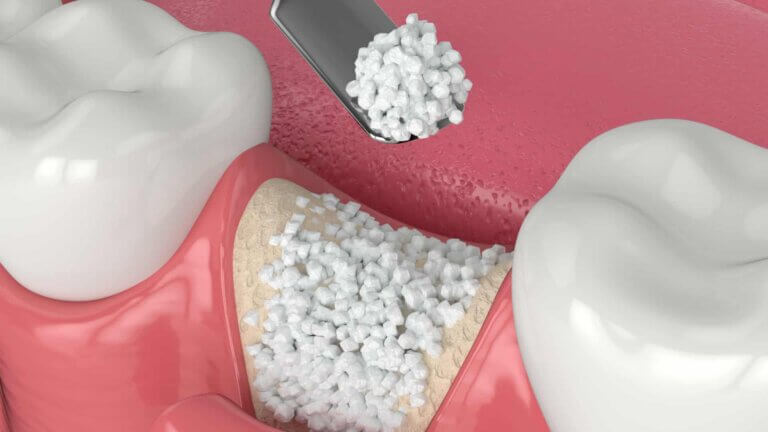
What Is Dental Bone Graft?
Dental bone grafting is a remarkable procedure designed to restore and enhance the underlying bone structure of the jaw, creating a solid base for various dental treatments. Whether you’re considering dental implants, dentures, or dental bridges, a sufficient amount of jawbone is essential to support these prosthetics effectively.
Unfortunately, due to various factors such as tooth loss, gum disease, or facial trauma, the jawbone can experience deterioration over time. This loss of bone volume can lead to significant complications and limitations when it comes to dental procedures. Fortunately, with advancements in modern dentistry, dental bone grafting offers a reliable solution to rebuild and strengthen the weakened jawbone. Before you deciding on whether a Dental Bone Graft is right for you there are some things you should know:
- Who Needs Dental Bone Graft?
- What Are The Different Types Of Dental Bone Graft?
- What Are The Advantages Of Dental Bone Graft?
- What Are The Alternative Treatments If I Do Not Choose Dental Bone Graft?
- How Much Does Dental Bone Graft Cost?
- What Are The Steps In The Dental Bone Graft Procedure?
- Can I Have Dental Bone Graft If I Am Pregnant?
- What Are Common Problems with Dental Bone Graft?
If you have any further questions about Dental Bone Graft or other dental services offered at Atlas Dental, please contact us.

Free phone consultation
Have questions about Dental Bone Grafts? Schedule a free phone consultation with our Toronto dentist.

5 star google reviews
Our patients love us! See for yourself why more and more people are choosing Atlas Dental for their dental bone grafts.

Book In Person Consult Online
Book an in-person consult to discuss your bone grafting case.
Who Needs Dental Bone Graft?
Dental bone grafting is a versatile and valuable procedure that can benefit a wide range of individuals dealing with specific oral health issues. If you find yourself in any of the following situations, dental bone grafting may be the solution you need to restore your oral health and improve your quality of life.
- Tooth Loss and Dental Implants: If you have lost one or more teeth due to decay, injury, or extraction, dental implants are an excellent option to replace them. However, for successful implantation, your jawbone needs to have adequate density and volume to support the implant posts. If your jawbone has deteriorated due to prolonged tooth loss or other factors, a dental bone graft can rebuild the bone structure, making it strong enough to accommodate dental implants.
- Gum Disease (Periodontitis): Advanced gum disease (periodontitis) can erode the supporting structures of your teeth, including the surrounding jawbone. Without a stable foundation, tooth loss becomes more likely. Dental bone grafting can help restore the damaged bone and prevent further tooth loss, providing stability for your remaining teeth.
- Facial Trauma: Accidents or injuries to the face and jaw can result in bone fractures and damage. Dental bone grafts can aid in repairing and rebuilding the affected areas, promoting proper healing and minimizing long-term complications.
- Tooth Extractions and Preservation: In some cases, a tooth may need to be extracted due to severe decay, infection, or impaction. To preserve the jawbone’s integrity and prevent future complications, a dental bone graft can be performed immediately after the extraction.
- Bone Resorption: Bone resorption is a natural process that occurs when a tooth is lost or extracted. The body gradually reabsorbs the bone, causing it to shrink in size. Patients experiencing significant bone resorption may require a bone graft to restore the bone density for improved oral function and aesthetics.
- Denture Wearers: If you wear removable dentures, you may notice that over time, they may not fit as securely as they once did. This is often due to the jawbone shrinking or changing shape. Dental bone grafting can help maintain the bone structure, ensuring a better fit for your dentures and preventing discomfort.
It’s essential to consult with a qualified dentist or oral surgeon to determine whether dental bone grafting is the right solution for your specific needs. They will conduct a thorough examination and discuss your dental and medical history to create a personalized treatment plan tailored to your situation. If you have further questions about Dental Bone Graft, please contact us.
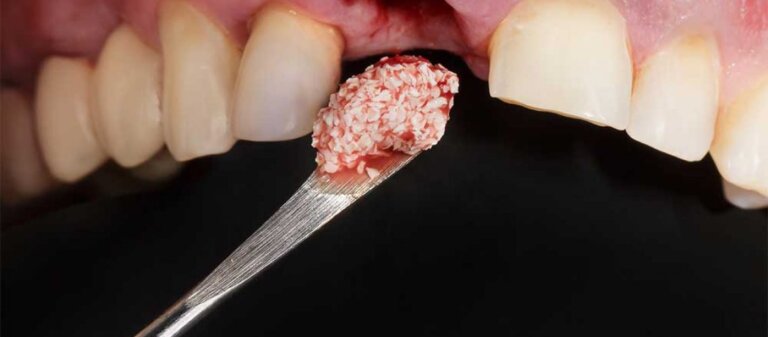
What Are The Different Types Of Dental Bone Graft?
Dental bone grafting procedures employ various materials and techniques to restore and regenerate jawbone structure. The selection of the most suitable type of bone graft depends on the individual’s specific needs, the extent of bone loss, and the purpose of the graft. Here are the common types of dental bone grafts used in modern dentistry:
- Autografts: Autografts involve using the patient’s bone from another area of their body, such as the chin, jaw, hip, or shin. This type of grafting is highly effective because it utilizes the patient’s own bone, reducing the risk of rejection or allergic reactions. Autografts are considered the gold standard for bone grafting due to their compatibility and ability to promote natural bone growth. However, it does require an additional surgical site for bone harvesting, which may result in increased discomfort and healing time.
- Allografts: Allografts utilize bone graft material from a human donor other than the patient. The donor bone undergoes rigorous sterilization and processing to ensure safety. Allografts are beneficial as they eliminate the need for a second surgical site and reduce patient discomfort during the bone grafting process. Additionally, they are readily available, making them a convenient option. However, since it involves a foreign donor, there may be a slight risk of the body rejecting the graft.
- Xenografts: Xenografts involve using bone graft material from an animal source, typically bovine (cow) or porcine (pig). Similar to allografts, xenografts are processed to remove any organic material that may cause immune responses. These grafts are widely used due to their availability and ability to provide a scaffold for new bone growth. Xenografts have proven to be safe and effective, and they eventually get replaced by the patient’s natural bone as healing progresses.
- Alloplastic Materials: Alloplastic bone grafts use synthetic or artificial materials, such as calcium phosphate, calcium sulfate, or bioactive glass, to promote bone regeneration. These materials are biocompatible and can integrate with the patient’s bone tissue over time. Alloplastic bone grafts are chosen when the patient prefers not to use donor tissues or has medical conditions that may limit other grafting options.
Each type of dental bone graft has its advantages and may be more suitable for specific situations. The dentist or oral surgeon will carefully evaluate your condition and recommend the most appropriate grafting material and technique to achieve the best possible outcome for your dental health. If you have further questions about Dental Bone Graft, please contact us.
What Are The Advantages Of Dental Bone Graft?
Dental bone grafting offers a multitude of advantages that can significantly improve both oral health and overall well-being. For individuals facing issues with jawbone density and structure, this innovative procedure can be a game-changer. Let’s explore the key advantages of dental bone grafting:
- Restoring Bone Volume: One of the primary benefits of dental bone grafting is its ability to restore lost or damaged bone volume. Whether due to tooth loss, gum disease, or trauma, the jawbone may lose its density over time. Bone grafts encourage the growth of new bone tissue, replenishing and strengthening the jawbone, providing a solid foundation for dental implants or other restorative treatments.
- Facilitating Dental Implants: Dental implants are the gold standard for replacing missing teeth, offering exceptional stability, functionality, and aesthetics. However, successful dental implantation requires sufficient bone density to support the implant posts securely. Dental bone grafts help augment the jawbone, making it suitable for the placement of dental implants, enabling patients to enjoy the benefits of a natural-looking and fully functional smile.
- Preserving Existing Teeth: In cases of advanced gum disease or tooth extractions, bone resorption can occur, jeopardizing the stability of adjacent teeth. Dental bone grafting aids in preserving the remaining teeth by strengthening the jawbone, preventing further bone loss, and reducing the risk of additional tooth loss.
- Improved Aesthetics: Dental bone grafting plays a pivotal role in enhancing facial aesthetics, especially in cases where significant bone loss has led to a sunken or aged appearance. By restoring bone volume, the facial contours are revitalized, leading to a more youthful and attractive appearance.
- Enhanced Denture Stability: For individuals wearing removable dentures, dental bone grafts can significantly improve the fit and stability of the prosthetics. A well-supported jawbone ensures that dentures remain securely in place, reducing discomfort, slippage, and the need for messy adhesives.
- Long-Term Solution: Dental bone grafting provides a long-term solution for addressing bone loss and related dental issues. Once the graft successfully integrates with the natural bone, it becomes a permanent part of the patient’s oral structure, offering lasting benefits.
- Safe and Predictable: Dental bone grafting procedures have become routine in modern dentistry, with high success rates and minimal risk of complications. With advancements in grafting materials and techniques, patients can undergo the procedure with confidence, knowing they are in safe and capable hands.
- Prevent Sinus Complications: For patients in need of dental implants in the upper jaw, bone grafts can help avoid complications with the maxillary sinus. The bone graft raises the sinus floor, creating sufficient space for implant placement and ensuring the implants do not encroach on the sinus cavity.
Dental bone grafting has revolutionized the field of dentistry, allowing patients to overcome challenging dental situations and achieve improved oral health and aesthetics. However, it’s essential to consult with a qualified dental professional to determine the most suitable approach based on your individual needs and goals. If you have further questions about Dental Bone Graft, please contact us.
What Are The Alternative Treatments If I Do Not Choose Dental Bone Graft?
If you decide not to undergo a dental bone graft, there are alternative treatments available to address the challenges associated with bone loss and tooth replacement. However, it’s important to note that the alternatives may come with their own set of considerations and limitations. Let’s explore the alternative treatments:
- Removable Dentures: Removable dentures are a common alternative for individuals who do not wish to undergo a bone graft or are not suitable candidates for the procedure. Dentures are prosthetic teeth attached to a gum-colored base that rests on the jawbone. While dentures can provide functional teeth and improve appearance, they may not offer the same stability as dental implants, especially if the jawbone lacks adequate density. Patients may experience difficulties with denture stability, speech, and chewing efficiency.
- Dental Bridges: Dental bridges are another option to replace missing teeth without a bone graft. Bridges consist of artificial teeth supported by adjacent natural teeth or dental implants. However, for dental bridges to be effective, there must be healthy and strong neighboring teeth to anchor the bridge. Additionally, the absence of a strong jawbone may make it challenging to support dental bridge implants, limiting the suitability of this option.
- Orthodontic Treatment: In some cases, orthodontic treatment, such as braces or Invisalign clear aligners, may be recommended to align teeth properly. This option is more focused on improving dental aesthetics and alignment rather than directly addressing bone loss.
- No Treatment (Accepting Missing Teeth): One alternative is to opt for no treatment and accept the consequences of tooth loss or bone deterioration. This approach may be suitable for individuals who are comfortable with their current dental situation and do not wish to pursue restorative treatments.
It’s crucial to remember that while alternative treatments may be suitable for some individuals, they may not provide the same comprehensive and long-term benefits as dental bone grafting. Dental bone grafting, with its ability to regenerate bone tissue, offers a reliable foundation for various dental procedures, including dental implants, which are considered the most effective and durable tooth replacement option available. If you have further questions about Dental Bone Graft, please contact us.
Cost of Dental Bone Graft
The cost of Dental Bone Graft is $1584 plus Dental materials expense (approximately $500). In addition, you should also consider additional costs related to any future dental implants. The codes relevant to Dental bone graft in the Ontario Dental Association’s Suggested Fee Guide appear as follows:
Grafts, Osseous, Allograft (including flap entry and closure)
- 42621 – Per Site: $1584 + Dental Materials Expense (approximately $500)
The Ontario Dental Association’s Suggested Fee Guide is a proposed fee structure that dentists in Ontario may or may not follow. Please consult with your dentist about fees before going ahead with treatment.
Dental Bone Graft is usually considered a supplementary service by dental insurance plans and may or may not be covered by your dental insurance. Be sure to find out from your dental insurance plan provider how much you are eligible for before going ahead with dental treatment. Your dentist can help you submit a predetermination to your dental insurance.
For patients without dental insurance, Atlas Dental is pleased to offer dental financing through Dentalcard. Affordable payment plans start at 7.95% for terms of 6 months to 6 years. To learn more about Dentalcard dental treatment financing, follow this link.
What Are The Steps In The Dental Bone Graft Procedure?
The dental bone grafting procedure is a carefully orchestrated process that involves several key steps to ensure its success. While specific details may vary depending on the type of bone graft used and the patient’s unique needs, the following are the typical steps involved in a dental bone graft procedure:
- Initial Consultation and Examination: The process begins with an initial consultation with your dentist or oral surgeon. During this appointment, your oral health will be assessed, and X-rays or other imaging techniques such as CBCT 3D scanning may be used to evaluate the condition of your jawbone. The dentist will discuss your dental history, medical history, and any concerns you may have to determine if you are a suitable candidate for a dental bone graft.
- Preparation and Anesthesia: Before your bone graft surgery, please review our pre-operative instructions. On the day of the procedure, the dental team will prepare you for surgery. Before the bone grafting begins, local or general anesthesia will be administered to ensure your comfort and minimize any discomfort during the procedure.
- Graft Material Placement: Depending on the chosen type of bone graft (autograft, allograft, xenograft, alloplastic material, or cell-based graft), the dentist will carefully place the grafting material into the area of bone loss. The graft acts as a scaffold, promoting the growth of new bone cells and facilitating the integration of the graft with the existing bone.
- Securing the Graft: In some cases, the graft may be secured with screws, pins, or membranes to keep it in place and promote stability during the healing process. These additional measures can help protect the graft and enhance its success.
- Closing the Incision: Once the graft is in place, the incision is sutured closed. The sutures are typically self-dissolving or will be removed by the dentist after a specified period.
- Post-Operative Care and Recovery: After the procedure, you will receive post-operative care instructions to ensure proper healing and reduce the risk of complications. This may include guidelines for pain management, oral hygiene practices, dietary restrictions, and follow-up appointments.
- Healing and Integration: Over the following weeks and months, the graft material will begin to integrate with the natural bone, stimulating the growth of new bone tissue. During this healing period, it is crucial to follow the dentist’s instructions and attend any scheduled check-ups to monitor the progress of the graft.
- Next Treatment Phase: Once the jawbone has healed and the graft has successfully integrated, the dentist may proceed with the next step in your planned dental treatment, such as dental implants. These procedures can now be performed with greater success and stability, thanks to the strengthened jawbone provided by the bone graft.
The dental bone graft procedure is a well-established and effective method to address bone loss and create a solid foundation for various dental treatments. While recovery times may vary depending on the extent of the graft and individual healing capacities, most patients can expect improved oral health and the restoration of their smile in the long run. If you have further questions about Dental Bone Graft, please contact us.
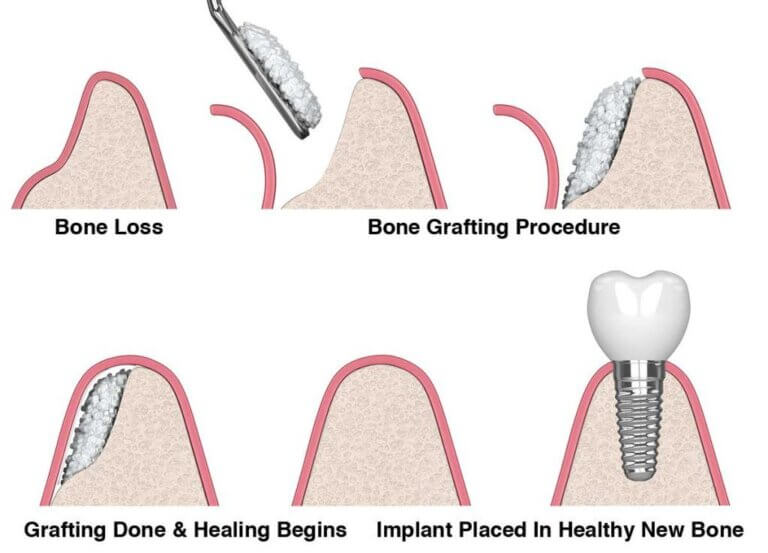
Can I Have a Dental Bone Graft If I Am Pregnant?
Pregnancy is a special time when the health and well-being of both the mother and the baby become top priorities. If you are pregnant and considering dental treatment, including a dental bone graft, it is natural to have concerns about the safety and potential risks involved. Let’s explore the considerations regarding dental bone grafts during pregnancy:
- Precautions During Pregnancy: Generally, elective dental procedures, including dental bone grafts, are often postponed until after childbirth to avoid unnecessary risks. Pregnancy can bring about hormonal changes and increased sensitivity, which may affect how your body responds to dental treatments. Additionally, it is essential to prioritize the health and comfort of the mother during this delicate period.
- Emergency Dental Situations: In cases of emergencies, such as severe dental infections or significant trauma, immediate dental treatment, including a dental bone graft, may be necessary to ensure the mother’s well-being. In such situations, dental professionals will work closely with the patient’s obstetrician to minimize risks and provide appropriate treatment.
- Consultation with Healthcare Providers: If you require dental treatment, including a bone graft, while pregnant, it is vital to inform both your dentist and obstetrician about your pregnancy. This open communication allows both healthcare providers to collaborate in assessing potential risks and benefits and developing a safe treatment plan.
- Timing of the Dental Procedure: If a dental bone graft is deemed necessary during pregnancy, it is generally recommended to wait until the second trimester, as this period is considered safer for elective dental procedures. The first trimester is a critical time for fetal development, and it is best to avoid unnecessary interventions during this phase.
- Anesthesia Considerations: Anesthesia is a crucial aspect of dental procedures, including bone grafts. During pregnancy, certain types of anesthesia are safer than others. Local anesthesia (numbing only the specific treatment area) is generally considered safe during pregnancy. However, the use of general anesthesia (where the patient is unconscious) or sedation may carry additional risks and should be avoided unless it is medically necessary and approved by both the dentist and obstetrician.
- Radiation Exposure: If X-rays are required for diagnostic purposes before the dental bone graft, the dental team will take all necessary precautions to minimize radiation exposure. They may use lead aprons and thyroid collars to shield the abdomen and neck from unnecessary radiation.
In summary, while dental bone grafts are generally postponed until after pregnancy, there may be specific circumstances in which the procedure is deemed necessary during pregnancy. In such cases, careful consideration, collaboration between dental and obstetric healthcare providers, and adherence to safety protocols are essential to ensure the well-being of both the mother and the developing baby. If you have further questions about Dental Bone Graft, please contact us.
What Are Common Problems with Dental Bone Graft?
Dental bone grafting is a well-established and successful procedure with a high rate of positive outcomes. However, like any medical or dental treatment, complications or challenges can arise in some cases. It’s essential to be aware of potential issues and how they can be managed to ensure the best possible results. Here are some common problems that may occur with dental bone grafts:
- Graft Failure: In some instances, the dental bone graft may not integrate successfully with the natural bone. This can lead to graft failure, where the grafted material does not stimulate enough new bone growth. Graft failure may require additional procedures to address the issue and achieve the desired bone regeneration.
- Infection: As with any surgical procedure, there is a risk of infection at the graft site. Infections can hinder proper healing and may lead to complications if left untreated. Prompt intervention with antibiotics and appropriate wound care is essential to manage and resolve any infections.
- Swelling and Discomfort: Swelling and discomfort are normal after a dental bone graft. However, excessive or prolonged swelling and pain may indicate a problem. Patients should follow their dentist’s post-operative instructions to manage swelling and discomfort effectively.
- Rejection or Allergic Reaction: In the case of using allografts or xenografts, there is a slight risk of the body rejecting the graft or experiencing an allergic reaction. While such occurrences are rare, it’s essential to inform your dentist of any known allergies or sensitivities before the procedure.
- Graft Resorption: In some cases, the grafted material may experience resorption, where it gets absorbed by the body before new bone formation occurs. Graft resorption can affect the long-term success of the dental bone graft.
- Nerve Damage: The dental bone graft procedure involves delicate anatomical structures, and there is a slight risk of nerve damage. Numbness or tingling sensations in the lips, chin, or other facial areas may indicate nerve injury and should be reported to the dentist immediately.
- Sinus Complications: For patients requiring dental bone grafts in the upper jaw, there is a possibility of sinus complications if the sinus cavity is perforated during the procedure. This can lead to sinus infections or other issues that need to be addressed promptly.
- Insufficient Bone Regeneration: In some cases, the desired amount of bone regeneration may not occur, leading to limitations in the feasibility of further dental treatments, such as dental implants.
It’s important to remember that while these problems are possible, they are not common, and most dental bone grafts are successful without complications. Your dentist or oral surgeon will thoroughly evaluate your oral health, discuss potential risks, and take all necessary precautions to ensure a safe and successful dental bone grafting procedure. If you have further questions about Dental Bone Graft, please contact us.
We also think you’ll like…
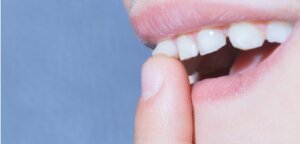
Tooth Trauma
Tooth Trauma What Is Tooth Trauma? Tooth trauma refers to any injury that affects the teeth or surrounding structures, such as the gums, lips, or
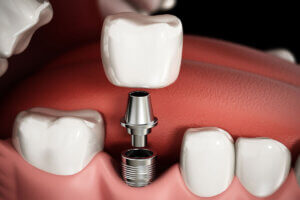
Fallen Out Dental Implant Crown
Fallen Out Dental Implant Crown What Is A Fallen Out Dental Implant Crown? Dental implant crowns are a popular and effective solution for replacing missing
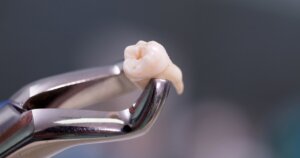
Wisdom Tooth Removal Pre-Operative Instructions
Wisdom Tooth Removal Pre-Operative Instructions What You Should Do Before Your Wisdom Tooth Extraction Surgery Wisdom tooth extraction is a surgical procedure to remove one
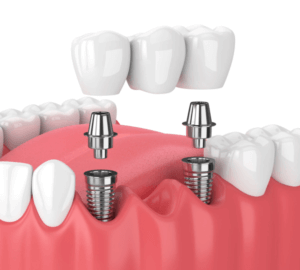
Fallen Out Dental Implant Bridge
Fallen Out Dental Implant Bridge What Is A Fallen Out Dental Implant Bridge? A dental implant bridge is a type of dental prosthetic that is
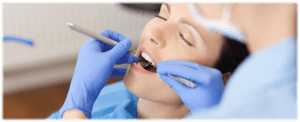
Oral Conscious Sedation
Oral Conscious Sedation What Is Oral Conscious Sedation? Dental anxiety and fear are common concerns that prevent many individuals from seeking the dental care they
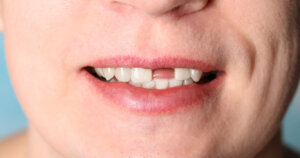
Missing Tooth
Missing Tooth What Is A Missing Tooth? A Missing Tooth refers to a condition where a tooth is no longer present in the mouth, either

